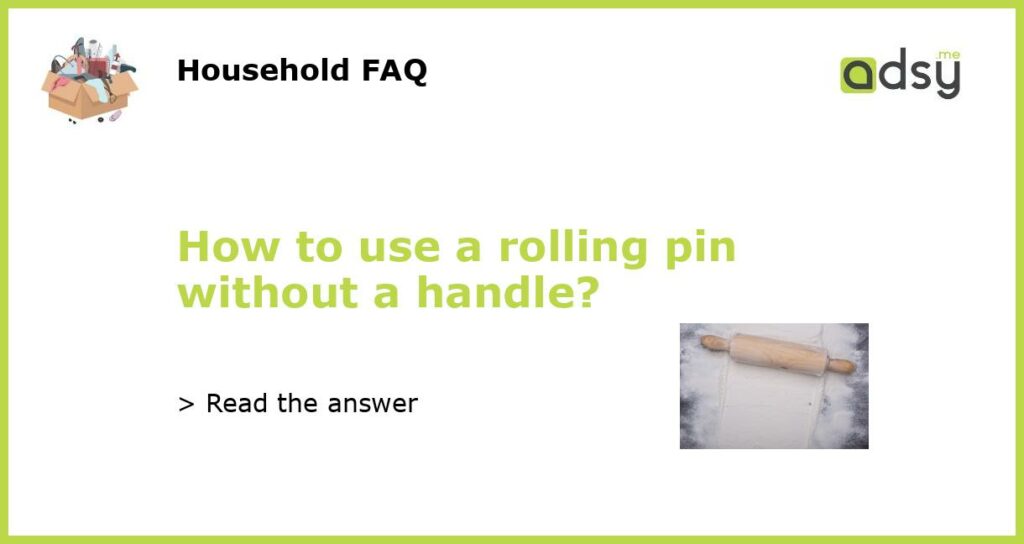Introduction
When it comes to baking, a rolling pin is an essential tool for rolling out dough to the desired thickness. However, not all rolling pins have handles, which can make them a bit challenging to use. But fear not! In this article, we will guide you on how to use a rolling pin without a handle effectively. Whether you have a traditional French rolling pin or a marble rolling pin without handles, these tips will help you achieve perfect results in your baking endeavors.
Start with the Right Technique
Using a rolling pin without a handle requires a slightly different technique compared to using a traditional rolling pin. Start by placing your hands on each end of the rolling pin, applying even pressure. Roll the pin back and forth across the dough, using your body weight to help apply consistent pressure. Remember to rotate the dough occasionally to ensure it is rolled out evenly. This technique allows you to have better control over the dough and helps prevent it from sticking to the pin.
Roll with Precision
Precision is key when using a rolling pin without a handle. To achieve an evenly rolled dough, start by applying light pressure and gradually increase it as you roll. This way, you can maintain control over the thickness, preventing the dough from becoming too thin in some areas. Keep in mind that the lack of handles means you have direct contact with the dough, making it easier to feel any inconsistencies. Don’t rush the process and take your time to roll the dough with precision.
Keep the Dough from Sticking
One common challenge when using a rolling pin without a handle is the dough sticking to the surface. To prevent this, lightly dust the pin and the surface with flour or use a non-stick spray. This will create a barrier between the dough and the pin, allowing for easier rolling. Be careful not to use too much flour, as it can alter the texture of the dough. Use a pastry brush to dust off any excess flour from the dough once it is rolled out.
Consider Using a Pastry Mat
Using a pastry mat can also be helpful when using a rolling pin without a handle. A pastry mat provides a non-stick surface, making it easier to roll out the dough. It also helps in measuring the thickness of the dough, as some mats come with measurement markings. Place the pastry mat on a clean surface, lightly flour it, and then roll out your dough. The mat will prevent the dough from sticking and make it easier to transfer to a baking sheet or mold.






